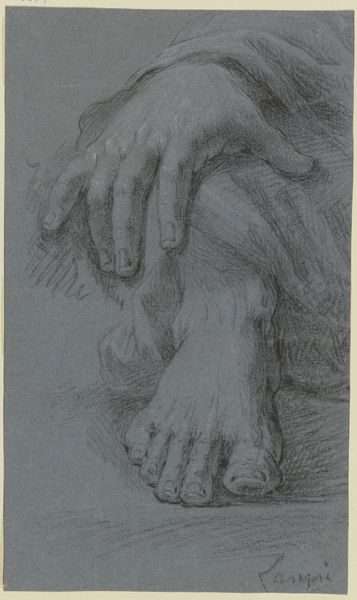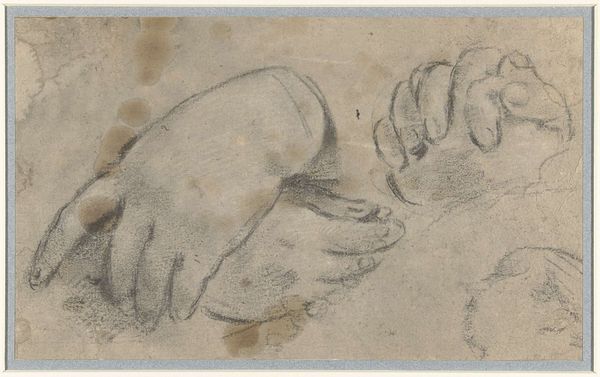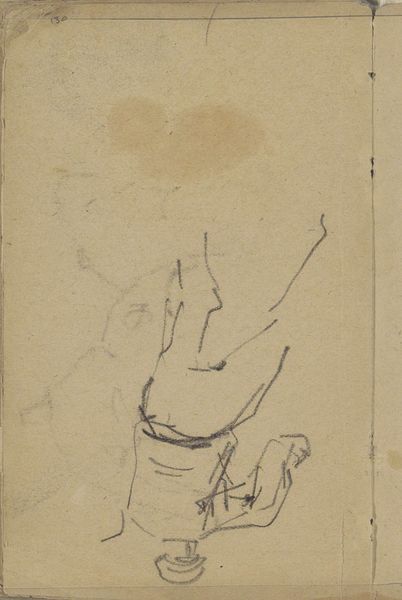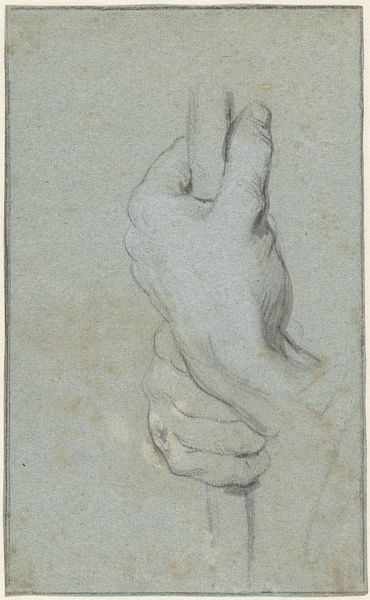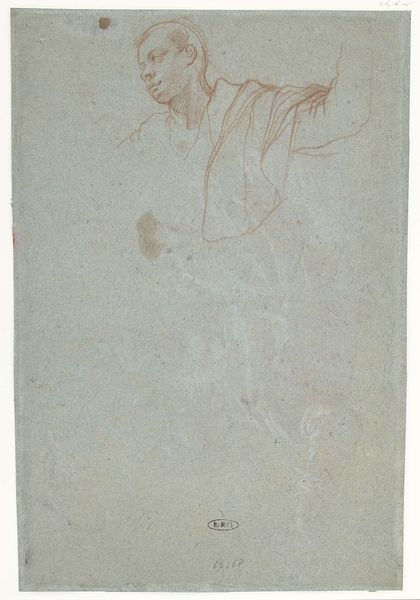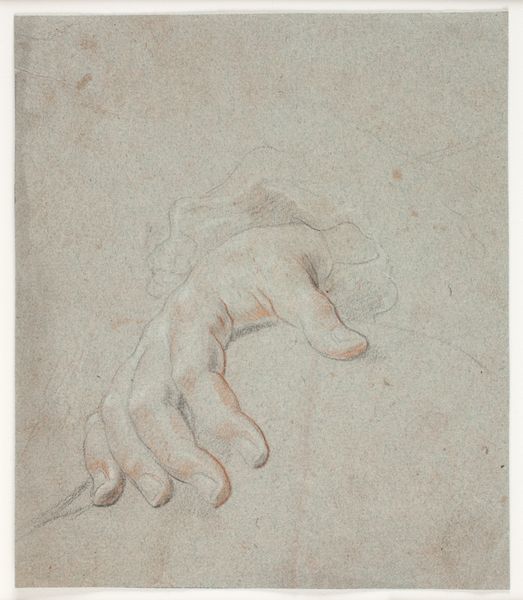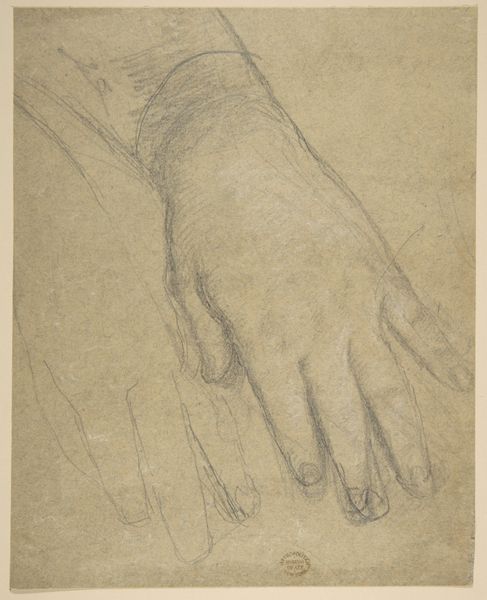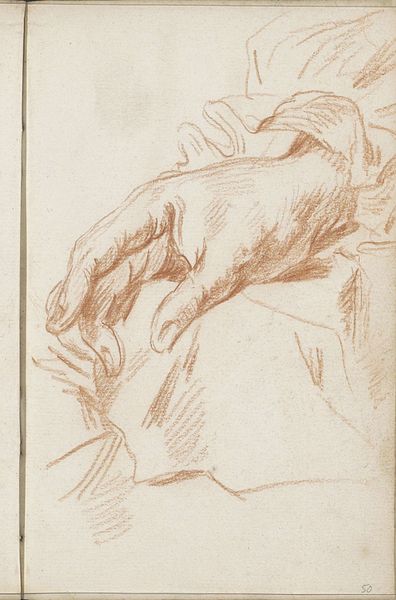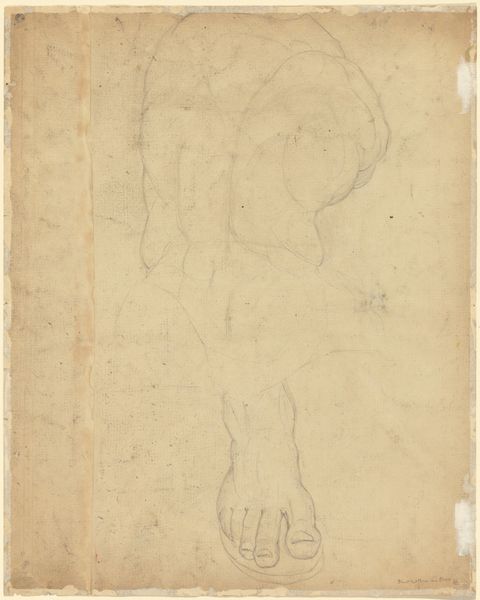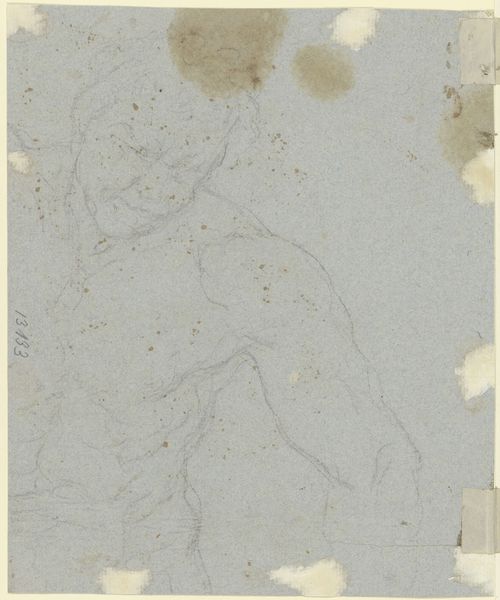
drawing, paper, pencil
#
portrait
#
drawing
#
baroque
#
pencil sketch
#
charcoal drawing
#
figuration
#
paper
#
pencil
#
line
Dimensions: height 235 mm, width 205 mm
Copyright: Rijks Museum: Open Domain
Editor: Here we have "Twee handen," or "Two Hands," by Anthony van Dyck, made sometime between 1610 and 1641. It's a delicate drawing on paper, rendered in pencil. It feels like a fleeting observation, like the artist was quickly trying to capture something specific about the hands. What do you see in this piece? Curator: Primarily, I'm struck by the economy of line. Observe how Van Dyck suggests volume and form with such minimal articulation. Notice the layering of lines; where are the densities, and how do they imply shadow and thus the curvature of the hands themselves? Editor: It's like he's focusing on the structure beneath the skin, how the bones and tendons create those shapes. The hand on the bottom is much more defined, too. Curator: Precisely. Consider, too, the negative space around the fingers. The artist doesn’t explicitly draw the outline of the hand but relies on implication. This creates a sense of lightness, almost as if the hands are floating. This relates directly to theories of semiotics—the signifiers being lines suggesting "handness," and the signified, our understanding of a hand. Editor: So it's not just a realistic drawing; it's about how we perceive shape and form through these minimal lines. I find it so insightful how a drawing can rely more on suggestion than depiction. Curator: Indeed. By deconstructing the representation, we begin to appreciate the sophistication of the artist's process. We have also gained new ways to read and analyze visual imagery through deconstruction and structuralism. Editor: I see what you mean. This was so very interesting. Thank you. Curator: A rewarding discussion; thank you.
Comments
No comments
Be the first to comment and join the conversation on the ultimate creative platform.
